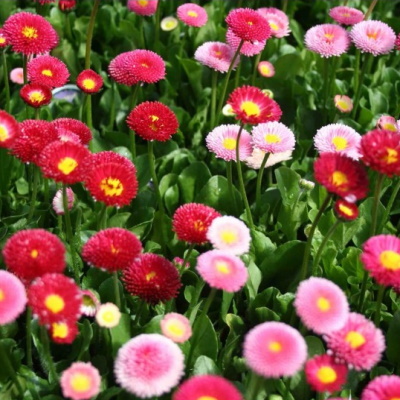-
Out of stock
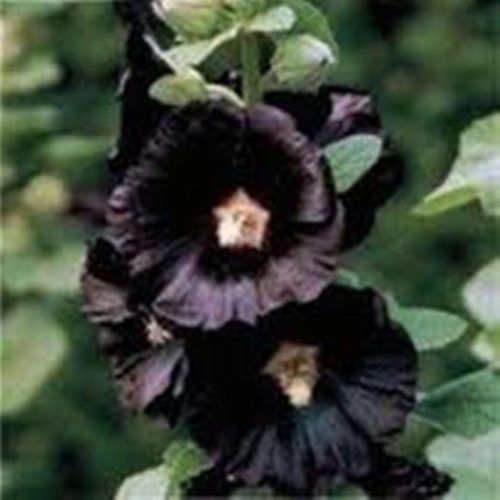 Biennial. This traditional variety is shockingly beautiful and richly coloured with its near-black flowers with just a hint of red. Gorgeous planted in the back of your flower bed or next to white buildings white flowers. A must for historical gardens.
Biennial. This traditional variety is shockingly beautiful and richly coloured with its near-black flowers with just a hint of red. Gorgeous planted in the back of your flower bed or next to white buildings white flowers. A must for historical gardens. -
Out of stock
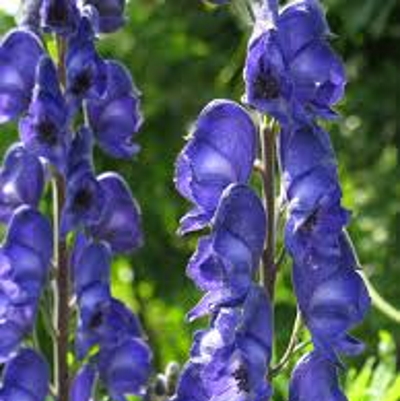 The monkshood plant is an herbaceous wildflower that can be found growing in mountain meadows throughout the northern hemisphere. The plant gets its name from the shape of the posterior sepal of the flowers, which resembles the cowls worn by monks. Also known as wolfsbane and Aconitum, monkshood has become popular as a garden addition because of its purple/blue flowers and attractive foliage. Growing 2 to 4 feet (0.5 to 1 m.) tall and 1 to 2 feet (0.5 m.) wide, perennial monkshood is best grown as a background plant. The leaves of the monkshood plant are palmate, meaning hand-shaped, with lobed “fingers” that often have toothed edges and vary in color from light to dark green. In late summer or early fall, it sends up showy spires of purple/blue flowers. Monkshead is not invasive and is both deer and rabbit resistant. However, monkshood, or wolfsbane, is moderately difficult to grow and once planted, doesn’t like to be moved so the best way to grow monkshood is to choose your spot carefully. It sometimes takes a while for it to become established.
The monkshood plant is an herbaceous wildflower that can be found growing in mountain meadows throughout the northern hemisphere. The plant gets its name from the shape of the posterior sepal of the flowers, which resembles the cowls worn by monks. Also known as wolfsbane and Aconitum, monkshood has become popular as a garden addition because of its purple/blue flowers and attractive foliage. Growing 2 to 4 feet (0.5 to 1 m.) tall and 1 to 2 feet (0.5 m.) wide, perennial monkshood is best grown as a background plant. The leaves of the monkshood plant are palmate, meaning hand-shaped, with lobed “fingers” that often have toothed edges and vary in color from light to dark green. In late summer or early fall, it sends up showy spires of purple/blue flowers. Monkshead is not invasive and is both deer and rabbit resistant. However, monkshood, or wolfsbane, is moderately difficult to grow and once planted, doesn’t like to be moved so the best way to grow monkshood is to choose your spot carefully. It sometimes takes a while for it to become established. -
 Aubrieta (Aubrieta deltoidea) is one of the earliest bloomers in spring. Often part of a rock garden, Aubretia is also known as "false rockcress". With its darling little purple flowers and dainty leaves, Aubrieta will scramble over rocks and other inorganic items, covering them with color and distracting the eye. Aubrieta groundcover is also remarkably drought tolerant once established and can handle the harsh heat of a full sun rockery. Read on for some tips on the care of Aubrieta and how to use this magical little plant in the garden.
Aubrieta (Aubrieta deltoidea) is one of the earliest bloomers in spring. Often part of a rock garden, Aubretia is also known as "false rockcress". With its darling little purple flowers and dainty leaves, Aubrieta will scramble over rocks and other inorganic items, covering them with color and distracting the eye. Aubrieta groundcover is also remarkably drought tolerant once established and can handle the harsh heat of a full sun rockery. Read on for some tips on the care of Aubrieta and how to use this magical little plant in the garden. -
 Aster Alpine Mix Aster Alpinus is a compact perennial with a spreading growth habit. It is easy to grow Alpine Aster from seeds, and this particular variety produces masses of lavender, blue, pink, and white flowers with yellow centers on a top of dark-green, lance-like foliage. Aster Alpine Mix blooms for several weeks from late spring and into fall providing a colorful display and attracting bees and butterflies. Alpine Aster looks gorgeous in mass planting, rock, and alpine gardens, containers, and borders. Aster Alpinus grows best in full sun to partial shade, and this drought-tolerant perennial is suitable for a low-water garden or xeriscape landscaping.
Aster Alpine Mix Aster Alpinus is a compact perennial with a spreading growth habit. It is easy to grow Alpine Aster from seeds, and this particular variety produces masses of lavender, blue, pink, and white flowers with yellow centers on a top of dark-green, lance-like foliage. Aster Alpine Mix blooms for several weeks from late spring and into fall providing a colorful display and attracting bees and butterflies. Alpine Aster looks gorgeous in mass planting, rock, and alpine gardens, containers, and borders. Aster Alpinus grows best in full sun to partial shade, and this drought-tolerant perennial is suitable for a low-water garden or xeriscape landscaping. -
Out of stock
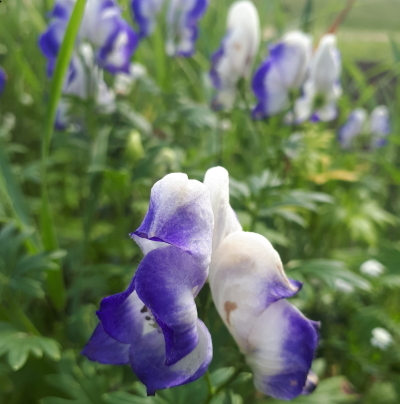 25 seeds per order. Purple Monkshood seeds 2020 harvest.
25 seeds per order. Purple Monkshood seeds 2020 harvest. -
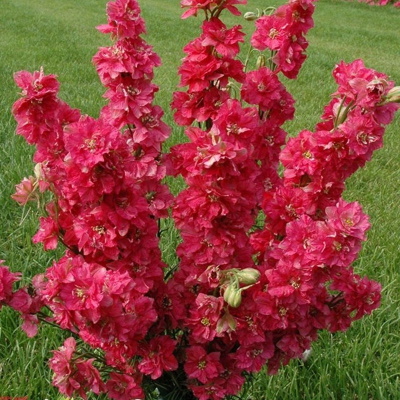 An annual plant, 80-120 cm in height. Flowers of red color, 2-3 cm in diameter. They are grown by sowing seeds in open ground in May or towards winter, seeds are sown for seedlings in March. It grows better in areas protected from the wind. Blooms profusely, from June to September. Used in mixed flower beds, group plantings, and for cutting.
An annual plant, 80-120 cm in height. Flowers of red color, 2-3 cm in diameter. They are grown by sowing seeds in open ground in May or towards winter, seeds are sown for seedlings in March. It grows better in areas protected from the wind. Blooms profusely, from June to September. Used in mixed flower beds, group plantings, and for cutting. -
 This delightful Japanese Catmint has many merits. Both the foliage and the flowers are fragrant. It blooms the first year from seed, unlike most perennials. It is upright and nicely branched, rather than sprawling. Make it a centerpiece of your containers and sunny-to-partly-shaded garden areas! Sister to Panther Dark Blue which walked off with the Bronze Medal at Holland's prestigious Plantarium competition in 2015. The attractive little plant is much more compact than other catmint species, standing just 20 cm high and 25 cm wide. The foliage is bright green, glossy, and toothed, releasing a strong, heavenly fragrance from spring through fall. Profuse bloomer! Medium to dark pink, these tubular flowers reach up to 5 cm long, held in nice clusters on the top of the plant. The blossoms are fragrant, and they begin in early summer and go right through into early fall. You'll be amazed by the flower power of this petite plant.
This delightful Japanese Catmint has many merits. Both the foliage and the flowers are fragrant. It blooms the first year from seed, unlike most perennials. It is upright and nicely branched, rather than sprawling. Make it a centerpiece of your containers and sunny-to-partly-shaded garden areas! Sister to Panther Dark Blue which walked off with the Bronze Medal at Holland's prestigious Plantarium competition in 2015. The attractive little plant is much more compact than other catmint species, standing just 20 cm high and 25 cm wide. The foliage is bright green, glossy, and toothed, releasing a strong, heavenly fragrance from spring through fall. Profuse bloomer! Medium to dark pink, these tubular flowers reach up to 5 cm long, held in nice clusters on the top of the plant. The blossoms are fragrant, and they begin in early summer and go right through into early fall. You'll be amazed by the flower power of this petite plant. -
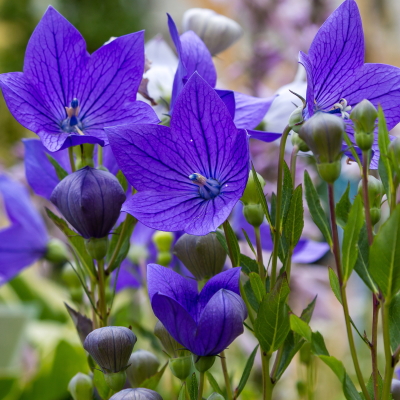
Balloon Flower (Platycodon grandiflorus) Easy-to-grow from flower seed, Balloon Flowers are an old-fashioned favorite, and they are as lovely in the garden as they are in the vase. This flower has unique star-shaped blue blossoms, and it blooms late summer and into the fall. Platycodon Grandiflorus has been around forever. The buds form like balloons and then grow until the right time to pop open and form the lovely star-shaped flower. Balloon Flower plants are very hardy perennials that can withstand periods of drought, and they are rarely bothered by disease or insect problems making them virtually a maintenance-free perennial.
-
 McKana Giant Columbine Seeds grow beautiful blooms in radiant hues of red, white, yellow, and purple. McKana Giant Columbine Seed Mix will liven up any garden, meadow, or flowerbed; plus, they make a lovely bouquet! McKana Giant Columbines stand 60-90 cm high and produce buttercup shaped flowers that are 10-15 cm across. Elite gardeners chose McKana Giants! It's easy to overcrowd these plants when they're small, use annual flowers to fill in between your giant columbine plants until they are fully grown. Ideal spacing is 45-60 cm apart.
McKana Giant Columbine Seeds grow beautiful blooms in radiant hues of red, white, yellow, and purple. McKana Giant Columbine Seed Mix will liven up any garden, meadow, or flowerbed; plus, they make a lovely bouquet! McKana Giant Columbines stand 60-90 cm high and produce buttercup shaped flowers that are 10-15 cm across. Elite gardeners chose McKana Giants! It's easy to overcrowd these plants when they're small, use annual flowers to fill in between your giant columbine plants until they are fully grown. Ideal spacing is 45-60 cm apart. -
-
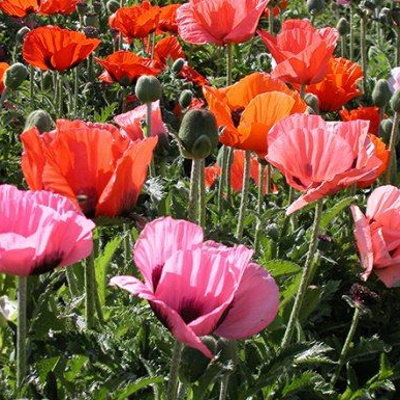 Perennial: Large 20 cm blooms in red, pink, mauve, salmon, white, and red with black centers. Expect up to twenty flowers per plant, followed by attractive seed pods from which seeds can easily be harvested. Pizzicato oriental poppy seeds are best direct sown in fall or mid-winter, and grow to a height of 50 cm. The flowers appear on stiff stems that stand up well in windy areas. This Oriental poppy mix blooms in June and July, after spring bulbs have faded, but before the arrival of summer flowers. After flowering, seed heads dry and the foliage fades away entirely, returning with autumn rains. This poppy is a good choice for xeriscaping, and it's deer resistant. Greenhouse: The seed requires darkness and a minimum 24 C soil temp. for proper germination. Since seedlings are hard to transplant, sow in peat pots and place them in a flat. Cover seed flat with black plastic or heavy paper. Seed germinates in about 10 days at 60 - 80%. Grow seedlings at 29 C days and l6°C - nights. Do not use cold water on seedlings. Cut all poppies in the bud, dip stems in boiling water for a few seconds to promote full bloom. Direct Sowing: Sow seed in July in warm soil. Do not try to transplant seedlings. Plants are quite hardy and bloom in early June next spring.
Perennial: Large 20 cm blooms in red, pink, mauve, salmon, white, and red with black centers. Expect up to twenty flowers per plant, followed by attractive seed pods from which seeds can easily be harvested. Pizzicato oriental poppy seeds are best direct sown in fall or mid-winter, and grow to a height of 50 cm. The flowers appear on stiff stems that stand up well in windy areas. This Oriental poppy mix blooms in June and July, after spring bulbs have faded, but before the arrival of summer flowers. After flowering, seed heads dry and the foliage fades away entirely, returning with autumn rains. This poppy is a good choice for xeriscaping, and it's deer resistant. Greenhouse: The seed requires darkness and a minimum 24 C soil temp. for proper germination. Since seedlings are hard to transplant, sow in peat pots and place them in a flat. Cover seed flat with black plastic or heavy paper. Seed germinates in about 10 days at 60 - 80%. Grow seedlings at 29 C days and l6°C - nights. Do not use cold water on seedlings. Cut all poppies in the bud, dip stems in boiling water for a few seconds to promote full bloom. Direct Sowing: Sow seed in July in warm soil. Do not try to transplant seedlings. Plants are quite hardy and bloom in early June next spring. -
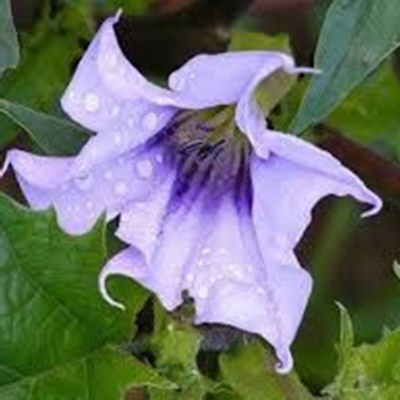 Very ornamental perennial is mostly grown as annual. Grows up to 150cm (60in.) tall, woody stem with large leaves. Fruit - a spherical capsule, covered with spines. Datura flowers are light blue, funnel-shaped, very fragrant, with white rim, up to 20cm (8in.). All parts of Datura plants contain tropane alkaloids (highly poisonous) and may be fatal if ingested by humans or other animals, including livestock and pets.
Very ornamental perennial is mostly grown as annual. Grows up to 150cm (60in.) tall, woody stem with large leaves. Fruit - a spherical capsule, covered with spines. Datura flowers are light blue, funnel-shaped, very fragrant, with white rim, up to 20cm (8in.). All parts of Datura plants contain tropane alkaloids (highly poisonous) and may be fatal if ingested by humans or other animals, including livestock and pets.
